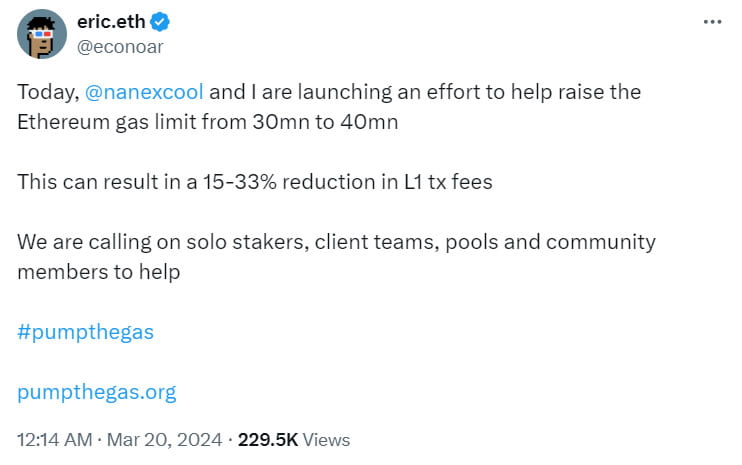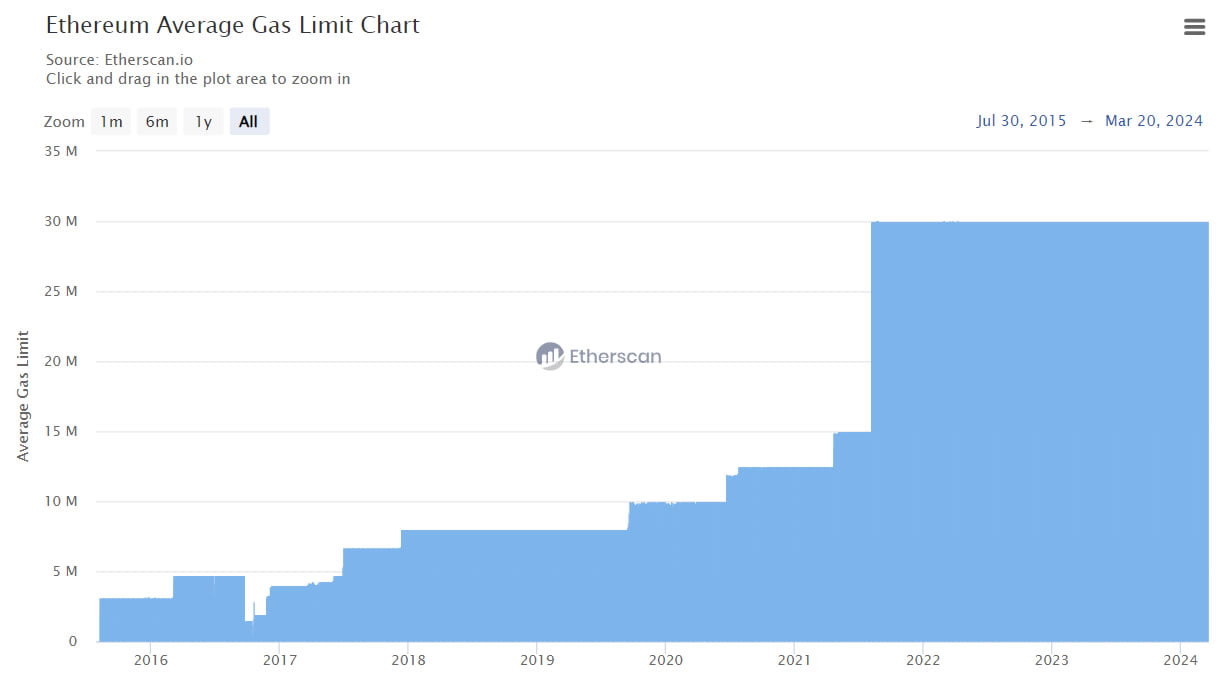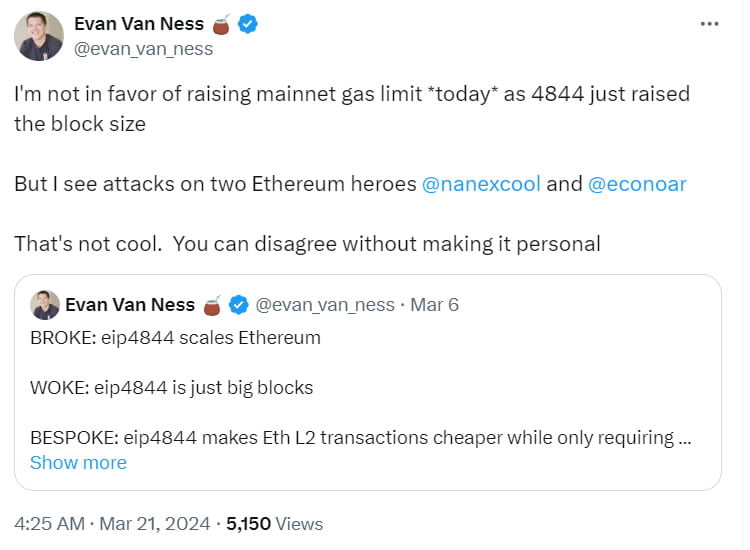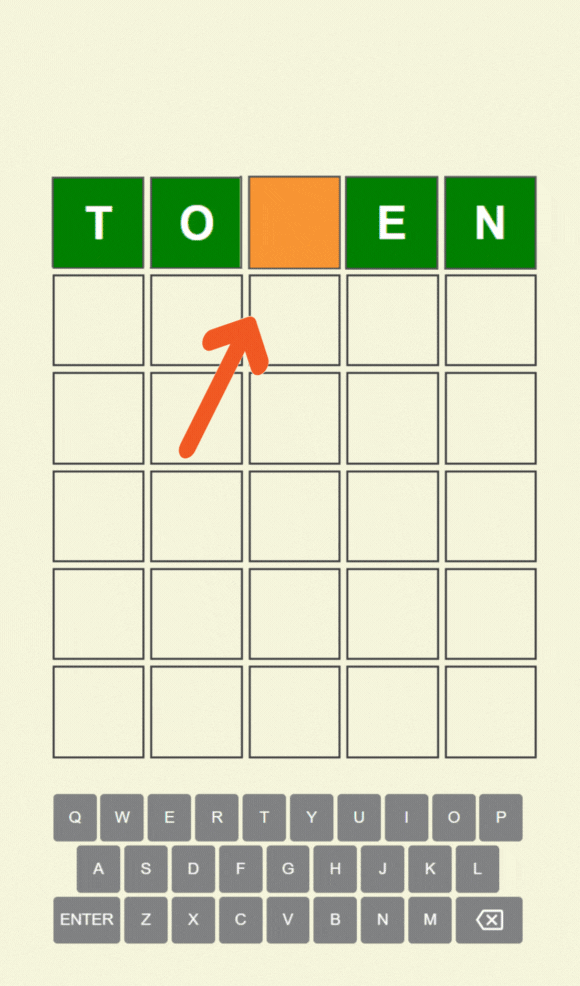Ethereum developers have initiated a new effort to increase the blockchain network’s long-standing static gas limit, arguing that this change could help scale Ethereum. On March 20, Ethereum developer Eric Connor and former MakerDAO smart contracts head Mariano Conti launched a new website called pump the gas, aiming to raise the Ethereum gas limit from 30 million to 40 million, which they claim will reduce transaction fees on the Layer-1 network.
Significant Step by Ethereum Developers
Connor stated in a post published on March 19 that this move could result in a reduction of Layer-1 transaction fees by 15% to 33%, and called on stakers, client teams, pools, and community members to help. Conti also observed that a Rocket Pool validator proposed a block with a 40 million gas limit on March 20.

The call to increase the Ethereum gas limit has been gaining momentum over the last few months. In January, Ethereum co-founder Vitalik Buterin suggested raising the gas limit from the 30 million it has been since August 2021 to 40 million. Base contributor Jesse Pollak responded by strongly supporting the increase of the Ethereum gas limit to 40 or 45 million, explaining that there is network slack and it would be beneficial for all parties.
Ethereum gas limit refers to the maximum amount of gas that can be spent on transactions or executing smart contracts in each block. Gas is the fee required to perform a transaction or execute a smart contract on the network.

Noteworthy Comments on the Issue
The aforementioned website explains that each transaction has a predefined gas cost and contracts have a gas limit they cannot exceed during execution. This prevents malicious contracts from overloading the network with infinite loops or excessive resource consumption. The website includes the following statement:
“A 33% increase in the gas block limit gives the Layer-1 Ethereum network a 33% greater capacity to process transactions in a day.”
It was also mentioned that data blobs introduced in the Dencun upgrade with EIP-4844 can significantly reduce Layer-2 transaction fees but do not decrease Layer-1 fees:
“A combination of blobs and a gas limit increase could help scale both Layer-1 and Layer-2 Ethereum networks.”
However, not everyone is in favor of this network adjustment. Venture investor and Ethereum advocate Evan Van Ness shared his views in a post on X:
“I am not in favor of raising the mainnet gas limit today because EIP-4844 has already increased the block size.”


 Türkçe
Türkçe Español
Español










